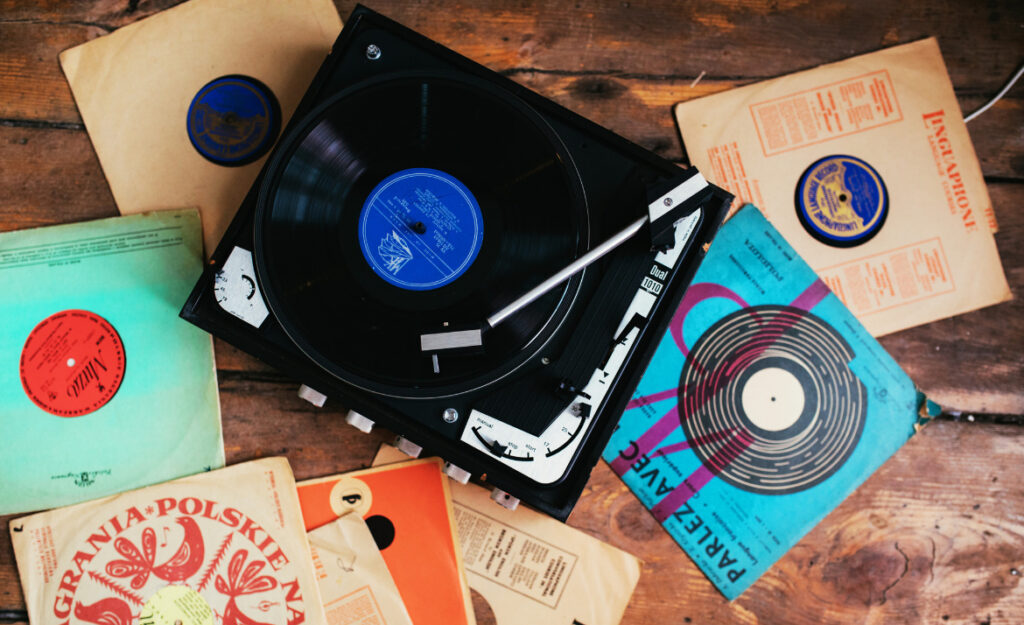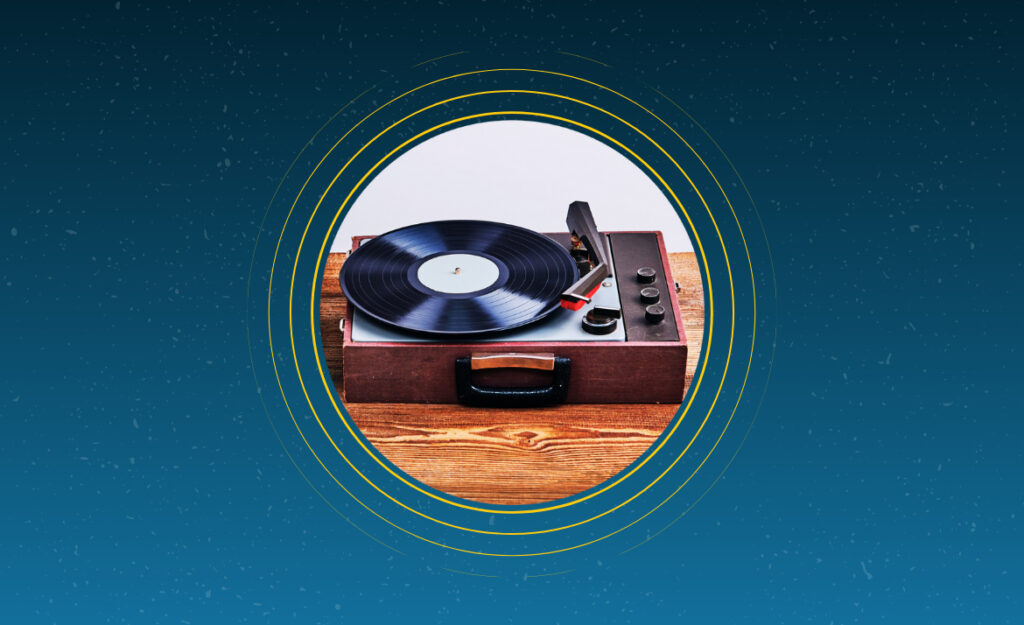
Most vinyl lovers have felt that thrill when a cherished record spins perfectly. Many don’t realize that small changes in daily routines can ensure turntable lifespan extension and keep that excitement alive for years.
Consistency in care makes a clear difference. Neglected turntables lose their sharp sound and steady playback, while well-kept ones deliver music with detail and warmth. Paying attention protects both records and equipment.
This article shares actionable habits with details to try at home. Each section breaks down a rule into doable steps, including real-life scenarios and checklists, so your next spin sounds as rich as your first.
Protect Against Dust and Debris with Vigilant Cleaning
Keeping dust off your turntable directly safeguards its moving parts. Develop a weekly cleaning routine to tackle buildup before it affects playback or shortens the device’s life.
Handle cleaning gently but thoroughly. Stubborn debris under the stylus or platter wears the mechanism over time. Efficient habits now prevent “mystery skips” and protect your investment well into the future.
Using Proper Tools for Safe Cleaning
Choose a soft, anti-static brush or microfiber cloth to dust the platter and tonearm. Avoid rough cloths, as they may scratch finishes or leave behind fibers that gather more dust.
To clean the stylus, a specialized stylus brush works best—lightly drag it from back to front. Never clean side-to-side, which strains delicate parts. Use a gentle approach to reduce stylus wear.
Moisten a cloth with distilled water for stubborn spots. Avoid commercial sprays unless specifically made for audio gear, as harsh chemicals degrade plastics. Finish by wiping the dust cover both inside and out.
Consistent Cleaning Schedule Scenario
Every Saturday morning, Alex dusts his turntable before breakfast. He starts with the dust cover, moves to the platter, and saves the stylus for last, following precise steps to avoid accidental damage.
By staying consistent, Alex doesn’t discover problems halfway through a favorite record. He notices his records sound bright and clear. Try adopting Alex’s sequence for a similar boost in sound clarity and reliability.
Set a recurring reminder on your phone or calendar. Link cleaning to a weekly habit, like your vinyl listening session, to reinforce follow-through and maximize turntable lifespan extension year after year.
| Cleaning Task | Tool Needed | Frequency | Top Tip |
|---|---|---|---|
| Platter Dusting | Anti-static brush | Weekly | Brush in circular motion |
| Stylus Cleaning | Stylus brush | Biweekly | Brush from back to front |
| Tonearm Polishing | Microfiber cloth | Monthly | Use light touch |
| Dust Cover Wipe | Soft cloth | Weekly | Both inside and out |
| Button/Knob Care | Soft brush/Q-tip | Monthly | Unplug device first |
Use Proper Record Handling to Prevent Unseen Wear
Adopting precise record handling avoids subtle scratches and stylus damage. Careful placement not only preserves vinyl but also supports turntable lifespan extension with every use.
Fingerprints, dust, and oils from poor handling can mar grooves or transfer to the stylus, making records sound dull. Each step in handling keeps playback quality high and equipment protected.
Understanding Correct Record Handling
Hold a record only by its edges and the labeled center—never touch the grooves. This habit prevents transferring skin oils, which attract grit and accelerate both stylus and vinyl wear.
- Pick up records by the outer edge and label to reduce contamination from skin oils. This keeps both records and your stylus cleaner over time.
- Clean both sides before each play using an anti-static brush. Press gently and move in the direction of the grooves for maximum removal of dust and debris.
- Place records directly back in their sleeves after play. This reduces the time they’re exposed to airborne particles or accidental knocks.
- Never stack records flat. Keep them upright to prevent warping. Store albums vertically, as you would with books, so they stay uniformly flat all year.
- Use both hands when placing or removing a disc to offer even support. This prevents flexing the record, which can cause microcracks or subtle groove damage.
Structured record handling is a habit that directly extends your equipment’s lifespan. Teach family members or guests the basics to ensure lasting protection with every use.
Quick Do/Don’t Guide for Handling
Do: Wash your hands before handling records; Don’t: Touch the grooves with fingertips to avoid sound quality loss and buildup of residue over time.
- Return each record to its inner sleeve and outer cover soon after use, preventing dust and light exposure that age your collection faster.
- Always support the record from below when slotting it onto or off the spindle. This keeps pressure even and avoids cracking the hole or distorting the disc.
- Use a carbon fiber brush lightly post-play for static reduction. Never skip this if your home environment is particularly dry or dusty.
- Label storage boxes clearly by genre or artist, making it easier to retrieve albums without flipping through stacks that risk damage.
- Rotate the position of rarely-played records every six months to keep even tension and prevent spine warping in storage.
Bringing these steps together, you’ll notice smoother play and cleaner sound on each spin—protecting both your records and turntable with small, mindful acts.
Attend to Stylus Care for Lasting Sound and Performance
Targeted stylus maintenance increases playback precision and extends turntable lifespan extension. Dedicated stylus cleaning and inspection catch problems early, letting you enjoy dynamic sound longer.
Neglecting stylus upkeep dulls sound and shortens the component’s usable life. Immediate action—whether routine cleaning or annual replacement—marks a turning point for both fidelity and equipment savings.
Spotting Stylus Wear Before It Spreads
Regular listening helps catch stylus wear. Notice harsh treble, reduced bass, or sibilance? These signs mean it’s time to inspect or change out the stylus to maintain optimal performance.
Visually inspect the stylus tip with a magnifier every couple of months. Look for debris, misalignment, or flattening. Early replacement saves both records and stylus from severe wear.
Replace the stylus every 500–1,000 hours of play. Mark the start date or use a logbook. Set a reminder on your calendar to avoid losing track.
Stylus Cleaning Essentials for Each Listening Session
Before pressing play, brush the stylus gently with a stylus-specific cleaner. This quick action removes invisible dust that could degrade both sound and stylus tip between sessions.
For sticky buildup, use a stylus cleaning solution recommended for your cartridge type. Dab, don’t soak, as too much liquid can loosen glue and endanger delicate mechanisms inside the stylus assembly.
Let the stylus dry before playing your next track. Check for stubborn residue under strong light, following up as needed. Repeat the process weekly for lasting clarity and reduced groove wear.
Prioritize Setup and Alignment for Consistent Playback
Precise turntable setup guarantees smooth playback, prevents tracking errors, and delivers years of uninterrupted vinyl enjoyment. Attention to alignment minimizes stress on all turntable components right from the start.
Proper balance not only extends stylus life but allows each record to sing with its true potential—free of skips, unnecessary wear, or distortion. Alignment is foundational for turntable lifespan extension enthusiasts.
Dialing in Tracking Force with Step-by-Step Accuracy
Use the manufacturer’s recommended tracking force as a starting point. Grab a digital stylus force gauge and make small adjustments, testing after each tweak. The perfect setting preserves grooves and reduces needle drag.
Unlock the tonearm, move the counterweight, and test at several points on the platter. Once the arm floats parallel, zero the dial, then add the precise tracking pressure. Confirm the stylus lowers smoothly and tracks confidently.
The right tracking force is like the goldilocks principle—not too heavy, not too light. Each vinyl side benefits from careful calibration, as longevity and audio detail improve with the right touch.
Anti-Skate and Cartridge Alignment Check
Set anti-skate to match your tracking force. This ensures the stylus sits centered in the groove, preventing one-sided wear that can throw off sound and destroy cartridges prematurely.
Align the cartridge using a protractor for your turntable. Match the cantilever—that skinny wire in the middle—to the lines, making sure it’s perfectly parallel. Tighten screws softly to avoid misalignment.
Test alignment outcomes by playing a trusted record. Listen for smooth panning, balanced volume, and crisp imaging. Re-check each adjustment annually or after moving your turntable to keep results consistent.
Follow Voltage and Power Advice to Avoid Surges
Power fluctuations can silently reduce your equipment’s lifespan. Choosing clean, stable power sources ensures long-term protection and uninterrupted listening sessions for all vinyl lovers.
Protect your investment with a surge protector rated for audio gear. Cheap strips aren’t sufficient; choose models designed to filter noise and maintain voltage stability, specifically for sensitive turntable circuits.
Safe Power-Up Process
Plug your turntable into a grounded outlet. If using accessories like preamps, connect them to the same surge protector. This prevents ground loops that introduce hum and electrical noise.
Power up your equipment before switching your amplifier or powered speakers on. Shut off your amplifier first before turning off your turntable to avoid power surges.
Leave enough space around your setup to avoid overheating. Adequate ventilation supports component life and keeps the unit cool across extended sessions.
Voltage Monitoring Habits
Consider a plug-in voltage monitor for your audio circuit—especially in older homes. This little device gives real-time insight into hazardous drops or spikes that harm your turntable’s sensitive electronics.
If your monitor shows wide voltage swings during storms or heavy appliance use, unplug your turntable. For ultimate safety, invest in an uninterruptible power supply (UPS) with battery backup for peace of mind.
Bring power management into your routine. Set up your turntable station in a protected location so that every play session is safe, consistent, and free from electrical surprises.
Rotate Records and Accessories for Balanced Wear
Rotating records and accessories distributes use evenly, preventing uneven wear that undermines both sound and hardware stability. Blending this habit into your routine means more uniform playback season after season.
- Rotate your main records every couple of weeks; this spreads groove wear evenly and avoids “favorite album fatigue” that makes certain discs wear out prematurely.
- Switch platter mats and slipmats monthly. This helps prevent debris from embedding in the mat and transferring to multiple records over time.
- Replace dust covers or clean them regularly, alternating between spares if available to minimize static buildup and the transport of airborne particles onto your turntable setup.
- Keep an eye on support feet and isolation pads. Rotating or flipping them every few months ensures even pressure and prevents deformation that can harm stability or cause low-frequency rumble.
- Vary the side of each record you start the session with to distribute stylus wear. If you spin side A on Monday, try starting with side B the next listen-through.
These mindful patterns let your equipment age gracefully, keeping playback fresh and your listening experience consistently enjoyable.
Inspect and Adjust for Environmental Impacts
Environmental shifts—temperature, humidity, vibration—directly affect playback and component integrity. Regular checks and quick tweaks counteract lasting harm and preserve turntable lifespan extension for every vinyl enthusiast.
High humidity causes mold in sleeves and warping in vinyl, while low humidity raises static and stylus pops. Monitoring conditions lets you respond early and avoid the subtle damage that adds up over time.
Mitigating Temperature and Humidity Issues
Use a digital hygrometer nearby and aim for 40–55% relative humidity. Place a small humidifier/build in the room during dry months or a dehumidifier during muggy summers to protect your setup.
Keep your turntable away from direct sunlight or radiators, which can warp plastics and vinyl. If your space heats up, close blinds and monitor the area temperature with a simple digital sensor set to alert at unsafe levels.
Store records in their sleeves, inside a closed cabinet or crate that allows gentle airflow. Prevent temperature swings by keeping your collection off exterior walls near drafty spots.
Reducing Vibration and Room Disturbance
Place the turntable on a robust, level surface. Try an isolation platform or thick mat to absorb low-level vibrations caused by footsteps, traffic, or walking nearby during play.
Position your speakers on stands or isolation pads far from the turntable. This disperses energy and helps prevent acoustic feedback—unwanted rumble that can jar delicate needle and groove contact.
Change the position or orientation of your gear every six months. Note any improvement in playback clarity or reduced skipping, and adopt the best arrangement as your default for optimal music enjoyment.
Keep Up Advance Planning for Record and Gear Upgrades
Proactive upgrades and maintenance checks guarantee your sound system keeps performing at a high level. Each small investment supports turntable lifespan extension and the pleasure of clear, vibrant playback every session.
Track stylus age in a notebook or phone note. Before sound deteriorates, order replacements. Early action saves frustration, avoids record damage, and maintains steady fidelity. The same discipline applies for belts, mats, and cables.
Anticipating Accessory Wear and Replacement
Inspect your turntable belt monthly for cracking or slipping—signs it’s time for a change. Belts last 2–5 years. Keep a backup on hand so you’re never caught off-guard during a listening mood.
Check RCA cables and connections for oxidation or loose fit. Clean jacks gently with isopropyl alcohol wipes, and replace cables at the first sign of persistent hum, buzz, or intermittent signal loss.
Revisit your mat’s feel and function. If it’s become hard, slick, or indented, test a new one for static reduction and increased record stability. Swap as necessary and notice the difference in every album side.
Integrate Simple Habits for Years of Musical Enjoyment
Each routine above supports measurable turntable lifespan extension and keeps your vinyl collection sounding its best. Habitual, detail-focused care outlasts one-off fixes every time.
Mindful daily and weekly steps—cleaning, rotating, checking alignment, attending to environmental factors, and upgrading gear—protect your equipment while delivering steady playback and musical depth for years ahead.
Build these habits at your pace, reinforcing the simple pleasure of vinyl with every play. The result is a rich, reliable listening experience that welcomes both new discoveries and beloved classics, session after session.



